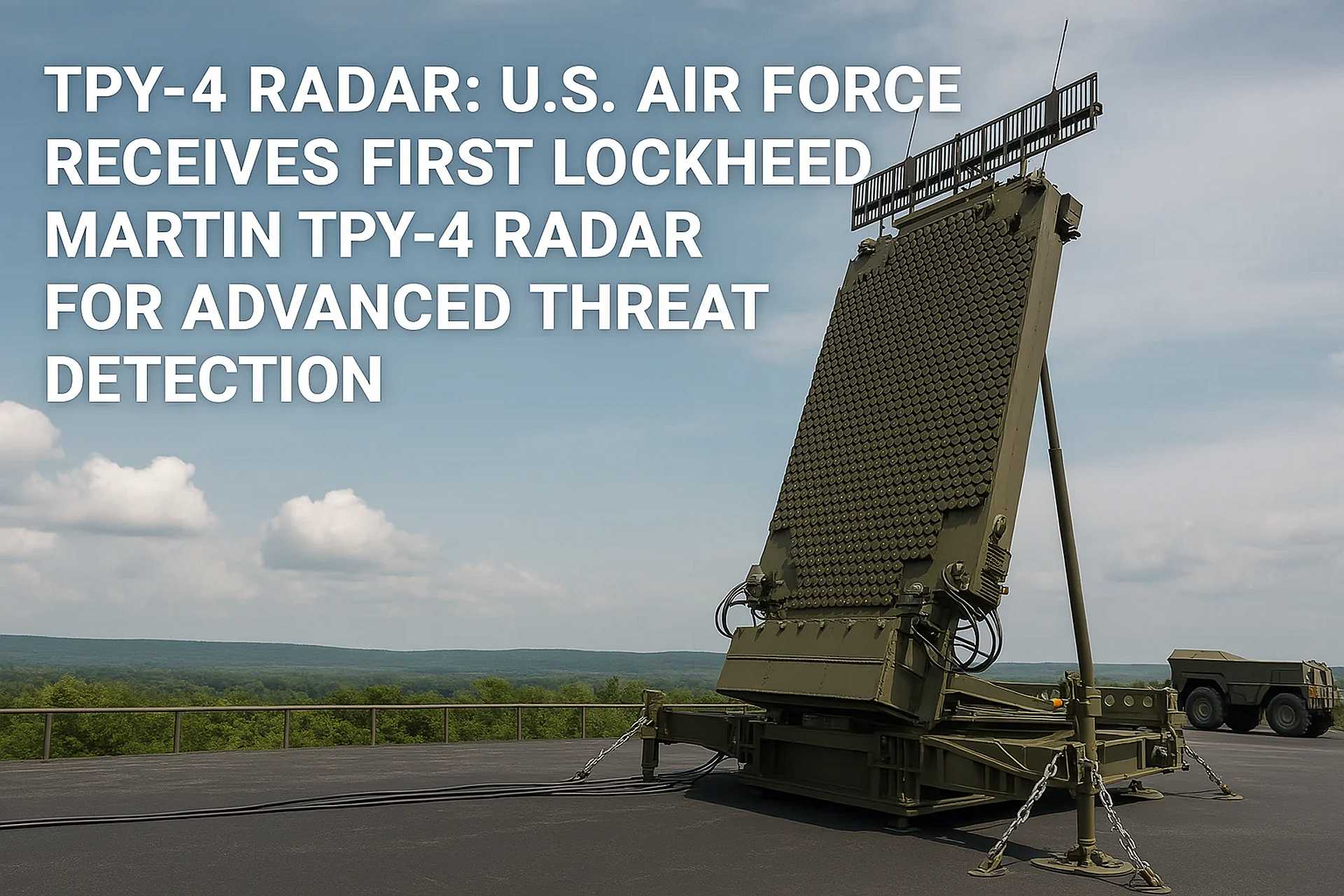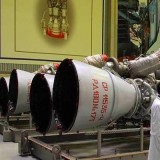U.S. Air Force Receives First Lockheed Martin TPY-4 Radar for Advanced Threat Detection

{loadposition bannertop}
{loadposition sidebarpub}
American Company Lockheed Martin has officially delivered the first TPY-4 radar system to the U.S. Air Force, marking a significant milestone in the development of the Three-Dimensional Expeditionary Long-Range Radar (3DELRR) program. This delivery, announced on April 7, 2025, follows the successful completion of Early Phase Testing and signals the beginning of a new era in ground-based air surveillance capabilities for the U.S. military. The radar will now enter government testing, setting the stage for broader deployment across the service.Follow Army Recognition on Google News at this link
Lockheed Martin’s TPY-4 radar, now in U.S. Air Force hands, offers enhanced situational awareness and next-gen threat tracking capabilities (Picture source: Lockheed Martin editing Army Recognition Group)
Rick Cordaro, Vice President of Lockheed Martin’s Radar and Sensor Systems, highlighted the strategic importance of this achievement: “The successful completion of early phase testing and delivery of the first TPY-4 radar system underscores our dedication to providing the U.S. Air Force with cutting-edge, high-performance systems that meet their evolving requirements and expectations.”
The TPY-4 radar represents a transformative leap in radar technology. It features a fully digital architecture across every transmit/receive element, utilizing a software-defined sensor framework that enables the system to rapidly adapt to changing threats and mission profiles. This digital flexibility is crucial for today’s dynamic combat environments, where threats evolve rapidly and demand responsive, multi-mission radar systems.
Designed to detect and track next-generation threats, the TPY-4 radar is optimized to identify smaller, harder-to-detect targets even in environments compromised by electronic jamming. This capability enhances the radar’s role in early missile warning, allowing for quicker threat assessments and faster response times—an essential advantage for U.S. and allied air defense operations.
Another key attribute of the TPY-4 is its versatility in deployment. The system is available in both fixed and highly mobile configurations and can be transported by a variety of platforms including C-130 and C-17 aircraft, trucks, rail, or helicopters. This flexibility ensures that the radar can be rapidly deployed and repositioned as needed without sacrificing operational effectiveness.
The value of the TPY-4 radar for the U.S. Air Force cannot be overstated. As the cornerstone of the 3DELRR program, the TPY-4 replaces aging radar systems with a modern solution that significantly enhances situational awareness, threat detection, and battlefield responsiveness. It also supports joint and coalition operations by providing interoperable, reliable radar data for integrated air and missile defense networks.
Furthermore, the TPY-4 is built with Gallium Nitride (GaN) technology, which boosts efficiency and reliability, reduces maintenance needs, and extends operational life—delivering a better return on investment for the Air Force over the radar’s lifecycle. Its multi-mission capability means it can conduct air surveillance, ballistic missile detection, and maritime surveillance simultaneously, making it a true force multiplier in both peacetime operations and high-threat environments.
As additional TPY-4 systems are delivered and fielded, they will significantly contribute to modernizing the U.S. Air Force’s radar infrastructure. Lockheed Martin’s innovation and continued partnership with the Department of Defense reaffirms its role in advancing national defense capabilities, with the TPY-4 poised to become a central component of America’s air surveillance and defense architecture for decades to come.

{loadposition bannertop}
{loadposition sidebarpub}
American Company Lockheed Martin has officially delivered the first TPY-4 radar system to the U.S. Air Force, marking a significant milestone in the development of the Three-Dimensional Expeditionary Long-Range Radar (3DELRR) program. This delivery, announced on April 7, 2025, follows the successful completion of Early Phase Testing and signals the beginning of a new era in ground-based air surveillance capabilities for the U.S. military. The radar will now enter government testing, setting the stage for broader deployment across the service.
Follow Army Recognition on Google News at this link
Lockheed Martin’s TPY-4 radar, now in U.S. Air Force hands, offers enhanced situational awareness and next-gen threat tracking capabilities (Picture source: Lockheed Martin editing Army Recognition Group)
Rick Cordaro, Vice President of Lockheed Martin’s Radar and Sensor Systems, highlighted the strategic importance of this achievement: “The successful completion of early phase testing and delivery of the first TPY-4 radar system underscores our dedication to providing the U.S. Air Force with cutting-edge, high-performance systems that meet their evolving requirements and expectations.”
The TPY-4 radar represents a transformative leap in radar technology. It features a fully digital architecture across every transmit/receive element, utilizing a software-defined sensor framework that enables the system to rapidly adapt to changing threats and mission profiles. This digital flexibility is crucial for today’s dynamic combat environments, where threats evolve rapidly and demand responsive, multi-mission radar systems.
Designed to detect and track next-generation threats, the TPY-4 radar is optimized to identify smaller, harder-to-detect targets even in environments compromised by electronic jamming. This capability enhances the radar’s role in early missile warning, allowing for quicker threat assessments and faster response times—an essential advantage for U.S. and allied air defense operations.
Another key attribute of the TPY-4 is its versatility in deployment. The system is available in both fixed and highly mobile configurations and can be transported by a variety of platforms including C-130 and C-17 aircraft, trucks, rail, or helicopters. This flexibility ensures that the radar can be rapidly deployed and repositioned as needed without sacrificing operational effectiveness.
The value of the TPY-4 radar for the U.S. Air Force cannot be overstated. As the cornerstone of the 3DELRR program, the TPY-4 replaces aging radar systems with a modern solution that significantly enhances situational awareness, threat detection, and battlefield responsiveness. It also supports joint and coalition operations by providing interoperable, reliable radar data for integrated air and missile defense networks.
Furthermore, the TPY-4 is built with Gallium Nitride (GaN) technology, which boosts efficiency and reliability, reduces maintenance needs, and extends operational life—delivering a better return on investment for the Air Force over the radar’s lifecycle. Its multi-mission capability means it can conduct air surveillance, ballistic missile detection, and maritime surveillance simultaneously, making it a true force multiplier in both peacetime operations and high-threat environments.
As additional TPY-4 systems are delivered and fielded, they will significantly contribute to modernizing the U.S. Air Force’s radar infrastructure. Lockheed Martin’s innovation and continued partnership with the Department of Defense reaffirms its role in advancing national defense capabilities, with the TPY-4 poised to become a central component of America’s air surveillance and defense architecture for decades to come.






